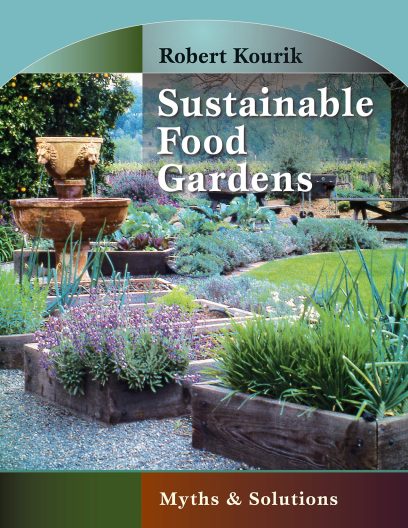 Robert Kourik has eight books in the Miller Library, the earliest from 1986. In all of these, he emphasizes the importance of adopting gardening practices that work with nature. He is especially interested in the root systems of plants and ways to maintain soil integrity while conserving water and nutrients. Based in Santa Rosa, California, at the southern edge of our region, his writing is easily transferable to Pacific Northwest gardeners.
Robert Kourik has eight books in the Miller Library, the earliest from 1986. In all of these, he emphasizes the importance of adopting gardening practices that work with nature. He is especially interested in the root systems of plants and ways to maintain soil integrity while conserving water and nutrients. Based in Santa Rosa, California, at the southern edge of our region, his writing is easily transferable to Pacific Northwest gardeners.
In the years since his first book, he has continued to learn. His newest title, “Sustainable Food Gardens,” takes the reader on this educational journey. Many of his opinions have evolved in the last 35 years and some have completely changed. Kourik is a good teacher. He has conversational approach to his writing and is good at providing sources and reasons for his opinions, recognizing that some contradict traditional thinking.
At well over 400 pages with large outer dimensions, this is a hefty book. I think it is best treated as a reference resource, to read individual chapters as needed. Important concepts are sometimes repeated if relevant in multiple chapters. While some may be frustrated by this structure, I found it very useful. It is also important to know this does not have a dictionary of food plants. While there are recommended choices for certain situations, another book is likely required for choosing your food crops.
Kourik encourages the food gardener to be realistic about the scale and setting for their garden. What works on a large organic farm, might not be as effective on your small backyard plot or p-patch. Some sustainable planting practices are only intended for warmer climates. Be realistic, too, about the amount of maintenance a food garden requires and don’t over commit yourself.
One chapter is devoted to container gardening, recognizing this may be the only option for many urban gardeners. The intricacies of drip water systems are thoroughly presented, as are the many other concerns of soil choices, fertilizing, and plants that are best suited for this growing environment. But Kourik recognizes that the simplest approach is often the best. “The quick-and-dirtiest way to grow plants like tomatoes on a deck or driveway is to buy a sack of potting soil or compost, lay if flat on its widest side, slit it open, and plant it with tomato or pepper seedlings.”
Excerpted from the Spring 2022 issue of the Arboretum Bulletin
![[The Garden Jungle] cover](https://depts.washington.edu/hortlib/graphix/gardenjungle300.jpg)
![[The Organic Profit] cover](https://depts.washington.edu/hortlib/graphix/organicprofit.jpg)